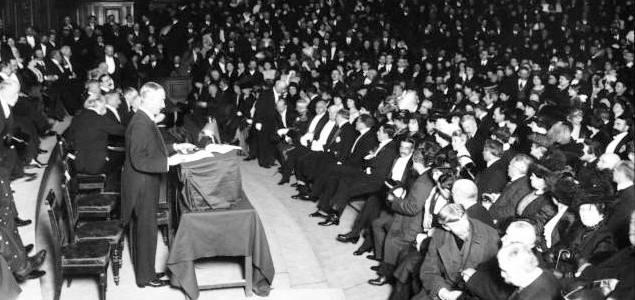
Main lecture hall of the Sorbonne in Paris on 20 March 1914. Source: Wikipedia.
The master class format, in the sense of an academic practice in which a supposed expert with knowledge about a particular topic expands on his or her ideas before an auditorium eager to assimilate their wisdom, is on its way out. Its shortcomings as a way of stimulating new ideas and simply transmitting information call for cultural managers, creators, and audiences to come up with new approaches to renew the genre.
I presented my first lecture-performance, before I new the term existed, at the bookshop of the Centro Cultural Gabriel García Márquez in Bogota in 2009. I called the piece Critics Cry Too. It consisted of a false or fictional roundtable, in which four writers stepped into the shoes of the four critics from part one of Roberto Bolaño’s 2666, whose shared interest in the life of the writer Benno Von Archimboldi brings them together at literature festivals and conferences. The writers spoke in the first person. They brought along their papers and read sections from them, mixed with seemingly improvised comments from their fellow guests. For audience members who were familiar with the book, the stratagem was obvious from the start. Everything they were hearing, they had already read. Those who did not know the plot were bewildered by the brutal honesty of the speakers. It was a simultaneously intellectual and frivolous analysis of Bolaño’s work. We presented the piece in several cities. At each performance, audiences listened carefully and the first thing they asked at question time was always: what they just told us, did it really happen?
In his book Theatrum Anatomicun (and Other Performance Lectures), the artist Pablo Helguera asks: “Wouldn’t it be great if presentations were theatrical works in which the dramatic aspects went hand in hand with the message? Why don’t dramaturges work with lecturers?” Since 1998, Pablo Helguera has regularly created many types of performance lectures, incorporating actors and theatrical strategies into academic events. Helguera is surprised by the fact that even speakers who find their own presentations boring insist on doing them anyway, in an increasingly futile attempt to perpetuate an obsolete model, instead of asking themselves: who am I when I stand before an audience?
In Spain, aside from a few scattered cases, MUSAC is the cultural institution that decided to put its weight behind this format. The book Lecture Performance. New Artistic Formats, Places, Practices and Behaviours, edited by the museum’s Director Manuel Olveira, is a kind of handbook for this practice. It includes extensive interviews with the artists, choreographers, stage directors, and writers who participated in the exhibition project launched by MUSAC in late 2013. In the brilliant foreword, Olveira argues that a lecture conceived in this way breaks free from its anachronous academic status and becomes an educational artistic practice, and at the same time a mise-en-scene, a show.
Lecture-performances can be sung, as Cristina Blanco does in Science Fiction, danced, as Aimar Pérez-Galli does in Sweating the Discourse, or walked through the streets of Berlin, as Dan Graham does in Outer-Habitation-Space. Basically, it is a hybrid form that expands the scope of existing formats such as installation, performance, and happening.
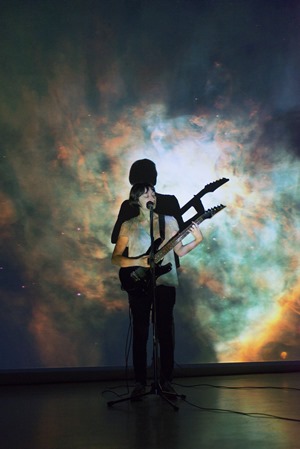
Cristina Blanco. Science Fiction lecture-performance.
Speech has performative power. Lectures give authority to those who impart them. Speakers must manage these elements in such a way that the content – which is ultimately the reason why they have been invited – reaches increasingly exacting audiences in the clearest, most sincere, and appealing way. It is true that auditoriums still fill up for traditional lectures, but it is just as true that audiences often leave these events bored, questioning the limited expressive skills of the speaker they admire. In an amusing performance as early as 1928, probably one of the first in the history of film, Ramón Gómez de la Serna showed us the attributes required to be a good public speaker.
There is little doubt that it is necessary to spread these ideas among cultural managers, programmers, and journalists. There will always be some resistance from those who are too complacent or lazy to fix something that supposedly works. But it may be worth staying a step ahead of audiences who have a wide range of cultural options. Because whether we like it or not, when a creator is present alongside his work, we have a mise-en-scene. Jean Echenoz explains it in a text included in the compilation book El juego del otro (Errata Naturae, 2010)
“There is no literature without spectacle. Regardless of the form it takes, the author’s presence before, beside, or behind his work is, and always will be, a mise-en-scene. Whether we like it or not – and those who like it can put it into practice with varying degrees of skill, while those who don’t like it can hit a wall with varying levels of disastrous consequences – it’s simply a good and very familiar show. That’s what you’re there for, and we should be glad that there is still an audience for these kinds of things. The form of the show will not alter its nature in any way. And neither will its non-form: even when somebody withdraws from the world — I won’t name names, the same ones always come up in these cases – even renouncing the world, with all the virtue, elevation, and absence this entails, is a big show. Fear and trembling make excellent spectacles. Silence is a super spectacle. There is no escape.”
Although some successful projects use the internet and social media (the most famous is probably Ted Talks), a speaker’s physical presence adds value, bringing it into line with contemporary political thought that advocates types of exchanges in which we work together, overcoming individualist attitudes. At a time like the present, when the interests of cutting-edge cultural institutions revolve around audiences, or, in other words, around finding ways for art or “culture” to become a key element in people’s lives, lecture-performances become an ideal means for capturing those audiences. As Manuel Olveira says, it is “a systemic turn that spans everything from programming to mediation.” Or in other words:
“Art, like porn, should be able to make us come every time, all the time. We should assume that going to see a show means that we are going to be penetrated, over and over. And that this will not just trigger intense pleasure processes, but also blur the boundaries that separate us from the work.”Jaime Conde-Salazar

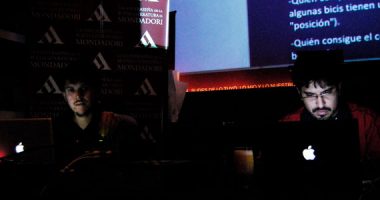
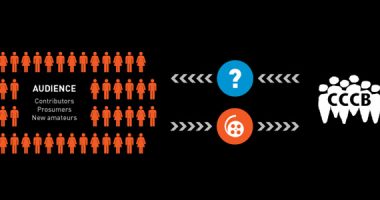

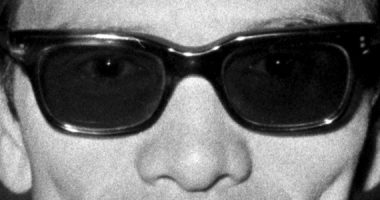
David Arellano | 15 September 2015
Me gustaría colaborar con información a través del este proyecto realizado en México en la ciudad de Guanajuato
David Arellano | 15 September 2015
Panel Performativo https://www.youtube.com/watch?v=ezSl3oX1ZBQ
Leave a comment